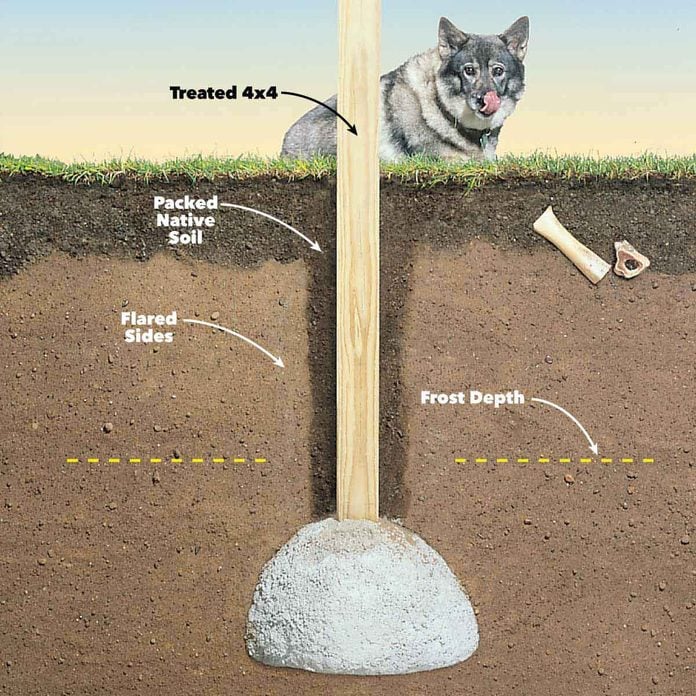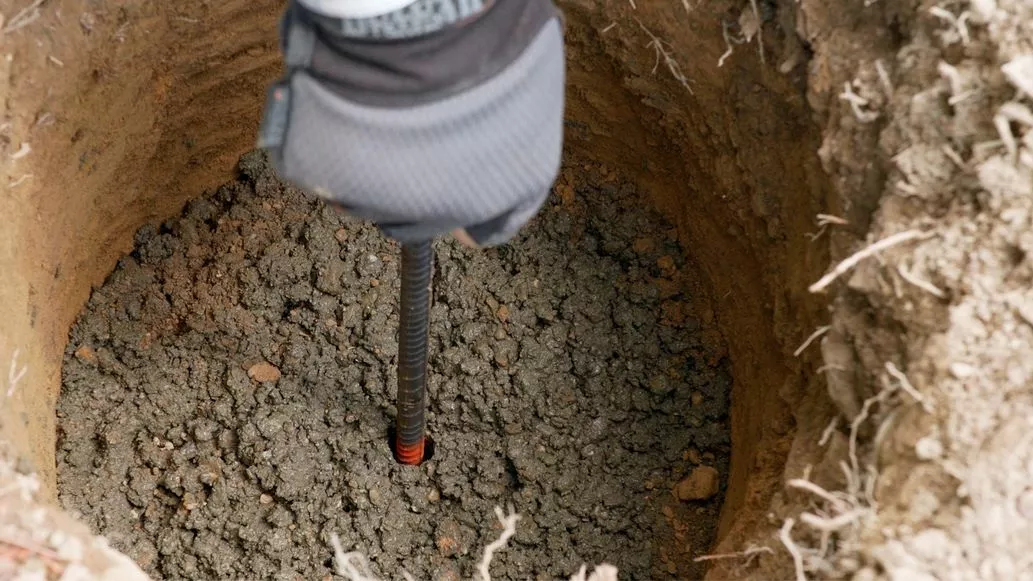Deck Footings Unveiled: Comprehending the Secret Parts of a Trusted Deck Framework
Wiki Article
Selecting the Right Deck Footings for Stability and Toughness
When it involves constructing a deck, among the most crucial decisions you will certainly make is picking the right footings for stability and resilience. The longevity and safety and security of your deck depend heavily on the sort of grounds you select, as they offer the vital support and stability to withstand the examination of time. With a myriad of choices offered, it can be overwhelming to identify which footings are best fit for your certain needs. In this discussion, we will certainly check out the various sorts of deck grounds, think about the crucial factors to consider when choosing, and look into the pros and disadvantages of different alternatives. By the end, you will certainly have a clearer understanding of the selections available and be better geared up to make a notified choice for your deck job.Kinds of Deck Grounds
These footings consist of a round opening filled with concrete, which provides a solid foundation for the deck blog posts. Concrete pier grounds are fairly very easy to set up and provide superb security, making them a preferred option for lots of deck jobs.These footings are installed by screwing them right into the ground, which develops a secure structure for the deck. They additionally permit for easy modification and leveling of the deck if needed.
Alternatively, some home builders choose for precast concrete grounds. These grounds are made from resilient concrete and can be found in numerous sizes and shapes to suit different deck designs. Precast concrete grounds are convenient to set up and provide a secure base for the deck structure.
Ultimately, another alternative is the post-in-anchor ground system. This sort of ground includes driving a metal support into the ground and attaching it to the deck blog post. It uses flexibility in regards to placing the deck messages and is suitable for decks with lightweight frameworks.
When picking the appropriate kind of deck footing, it is vital to consider factors such as dirt problems, deck tons, and neighborhood building ordinance (Deck Footings). Consulting with a professional contractor or architectural engineer can aid guarantee the ideal footing is chosen for a steady and secure deck
Aspects to Consider When Picking Footings
When selecting the proper grounds for a deck, it is essential to thoroughly take into consideration numerous factors such as soil problems, deck load, and adherence to regional building regulations. These aspects play a substantial role in guaranteeing the security and longevity of the deck structure.One of the primary elements to take into consideration is the dirt problems. The kind of dirt on which the deck will certainly be developed determines the type of footings required. Decks built on loosened or sandy dirts may require deeper footings to provide adequate support and prevent settling. On the other hand, decks built on clay or expansive dirts might require grounds that can accommodate the dirt's tendency to increase and contract.
An additional crucial aspect is the deck tons. The weight of the deck, consisting of the products utilized and any possible online loads such as furnishings or celebrations, should be considered when picking grounds. The footings have to be created to bear the weight of the deck and distribute it equally to stop any architectural problems or failures.
Last but not least, adherence to local building ordinance is extremely important. Building regulations differ from region to area, and it is necessary to abide by the details demands established by the regional authorities. Deck Footings. These codes ensure that the deck is developed securely and satisfies the necessary requirements for structural stability and see this website load-bearing ability
Concrete Footings: Pros and Disadvantages

Concrete footings provide a number of advantages and downsides when made use of as the structure for a deck. On the favorable side, concrete grounds give superb security and durability.
Another advantage of concrete footings is their versatility. They can be poured into different shapes and sizes to fit numerous deck designs and configurations. Concrete footings can be personalized to fit the details requirements and demands of the deck structure.
Nonetheless, there are likewise some disadvantages to using concrete grounds. This can boost the general cost of the deck project and might need professional aid.

Helical Piers Vs. Sonotubes: Which Is Better?
In considering the structure alternatives for a deck, the contrast between helical piers and sonotubes is critical in establishing the premium selection. They are turned into the ground using hydraulic machinery, giving a secure and sturdy foundation for the deck.The helical plates on the piers create a solid grip with the dirt, avoiding any activity or moving of the deck. Sonotubes, on the other hand, count entirely on the concrete loading for stability, which might not use the same degree of strength and resistance.
In terms of installment, helical piers are reasonably simpler and faster to mount contrasted to sonotubes. The hydraulic machinery utilized to twist the piers into the ground makes sure a efficient and fast process. Sonotubes, on the other hand, call for digging holes and putting concrete, which can be labor-intensive and time-consuming.
In addition, helical piers are an even more functional option. They can be made use of in different dirt conditions and can be changed or enhanced if needed. Sonotubes, on the other hand, may need added assistance, such as rebar, in certain soil conditions or areas with high tons needs.
Picking the Right Footings for Your Deck's Dimensions
For optimal structural stability, it is important to meticulously pick the appropriate footings that line up with the dimensions of your deck. The dimensions of your deck, including its size, size, and view website elevation, play a substantial role in identifying the kind and dimension of footings required.When choosing footings for Get More Information your deck, it is essential to consider the load-bearing capability of the dirt. The weight of the deck, combined with the weight of any type of furnishings or people on it, puts in a substantial pressure on the footings (Deck Footings). It is vital to pick grounds that can appropriately sustain this weight without sinking or changing over time.
The size and form of the grounds need to additionally be considered. Bigger decks with better measurements require bigger footings to give adequate security and assistance. The form of the footings, whether they are square or round, depends upon the design and layout of the deck. Furthermore, the deepness at which the footings are installed ought to be identified based on the frost line in your region to stop any kind of heaving or changing as a result of freezing temperature levels.
Final Thought
In final thought, picking the right deck footings is important for guaranteeing stability and sturdiness. Aspects such as the kind of grounds, the deck's dimensions, and the advantages and disadvantages of different alternatives must be taken into consideration. Concrete footings use stamina and durability, yet may be more costly and taxing to set up. Helical piers and sonotubes have their very own benefits and negative aspects. Ultimately, picking the ideal grounds for your deck's specific demands is important for a effective and long-lasting structure.These grounds are composed of a round hole loaded with concrete, which offers a solid foundation for the deck messages. Concrete pier grounds are fairly very easy to install and use excellent stability, making them a preferred choice for lots of deck tasks.
Precast concrete footings are hassle-free to install and provide a secure base for the deck framework.
It uses versatility in terms of positioning the deck articles and is appropriate for decks with light-weight frameworks.
Concrete grounds supply a number of benefits and drawbacks when made use of as the foundation for a deck.
Report this wiki page